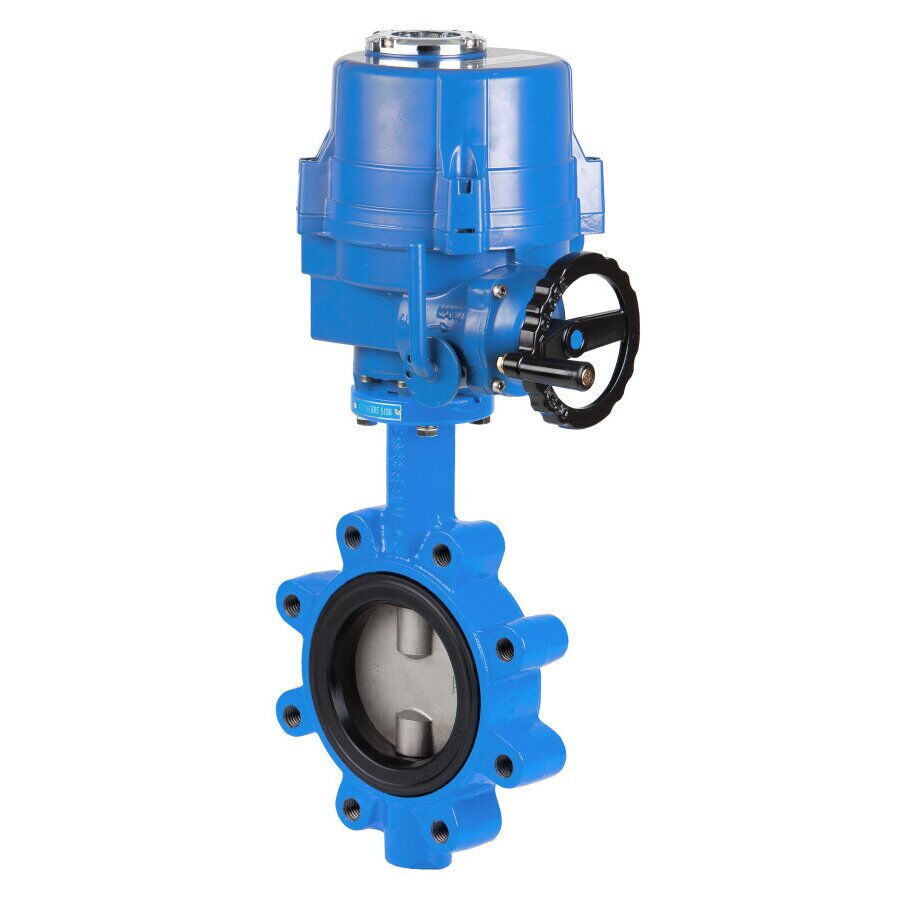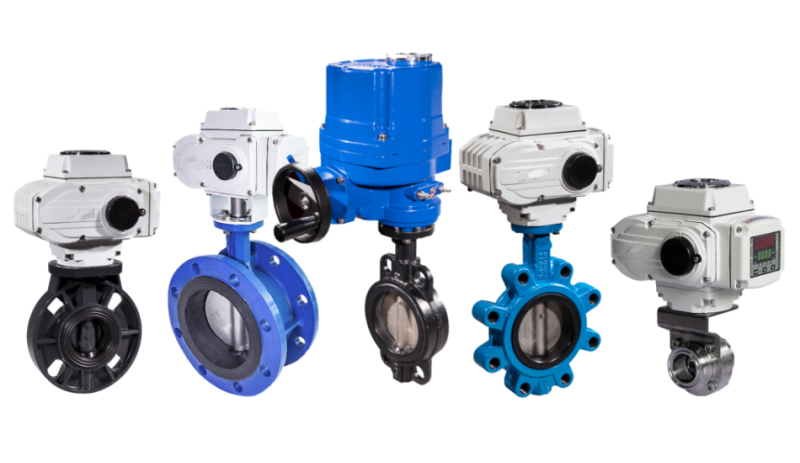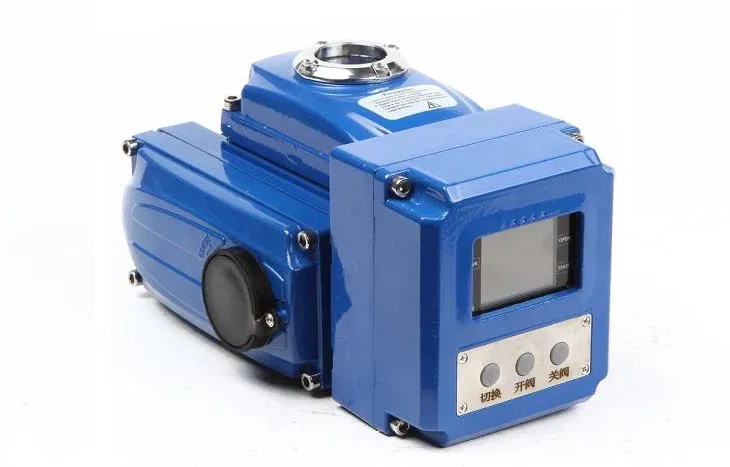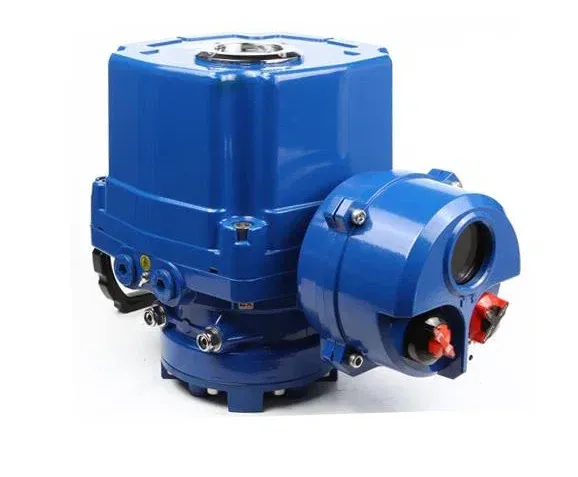
In the world of industrial automation and fluid control, electric butterfly valves play a pivotal role in optimizing system performance and ensuring operational efficiency. These valves are widely used in sectors such as flue gas desulfurization, HVAC systems, mining, chemical processing, and power generation due to their reliable performance, remote control capability, and minimal maintenance requirements. However, like all electromechanical devices, they require routine inspection and maintenance to sustain optimal performance and extend service life.
This article offers a detailed look into the structure, types, and daily maintenance practices for electric butterfly valves, helping maintenance engineers and operators implement effective care strategies.
An electric butterfly valve is a quarter-turn rotary valve driven by an electric actuator, enabling precise flow regulation and remote control. When electric power—either AC or DC—is applied, the actuator drives the valve disc to rotate 90 degrees around the valve stem, moving the valve between fully open and fully closed positions. This mechanism allows for efficient start/stop control of fluid media across various industrial applications.

Remote control: Operable through wired or wireless signals.
Easy to install and automate: Simple integration into SCADA and DCS systems.
High torque output: Suitable for high-pressure applications.
Reliable sealing: Maintains integrity even in corrosive or high-temperature environments.
Durable construction: Long service life with minimal wear.
Energy efficient: Electric actuation avoids the need for compressed air or hydraulics.
These characteristics make electric butterfly valves ideal for demanding operational environments where automation and remote monitoring are critical.
The choice of electric actuator significantly impacts the performance and functionality of an electric butterfly valve. Depending on the control requirements, electric actuators can be categorized into three primary types:
Function: Basic open or close operation with a 90-degree rotation.
Power source: Compatible with both AC and DC power supplies.
Control: Signal-based control system; supports manual override in case of power failure.
Torque range: Up to 4000 Nm.
Use case: Ideal for simple, binary flow applications where modulation is not required.

Function: Allows precise adjustment of valve opening angle between 0° and 90°.
Control: Accepts analog input signals (typically 4–20 mA or 0–10 V) for proportional control.
Manual override: Available for emergency use.
Torque: Up to 4000 Nm.
Use case: Suitable for flow rate regulation applications requiring precise control.
Function: Advanced actuator with smart control features and user interface.
Display: Integrated LED screen shows real-time valve position and system status.
Communication: Supports digital protocols like Modbus, Profibus, or HART.
Manual override: Yes, with torque up to 4000 Nm.
Use case: Ideal for complex process automation systems requiring diagnostics and remote control.

Although electric butterfly valves are designed for longevity and low maintenance, daily operation in harsh industrial environments exposes them to wear, corrosion, and electrical degradation. Regular maintenance ensures the following:
Operational reliability: Prevents unexpected breakdowns or system failures.
Process efficiency: Ensures accurate flow control and tight shut-off.
Extended service life: Reduces the need for premature replacement.
Safety compliance: Minimizes the risk of fluid leaks, which could be hazardous.
Routine inspections and timely interventions can prevent minor issues from escalating into major failures that could interrupt production or lead to costly repairs.
Technicians should begin each maintenance cycle by reviewing the valve’s operational status, including recent cycles, electrical faults, and control responses. Monitoring system feedback helps identify early signs of malfunction.
Action Points:
Check if the valve is opening and closing fully.
Note any irregularities in operation timing or control signal delays.
Use actuator diagnostics (if available) to detect anomalies.
A thorough visual inspection can uncover a range of mechanical and electrical issues that may affect valve performance.
Action Points:
Inspect the valve body and disc for external corrosion or deformation.
Check actuator housing for signs of water ingress or damage.
Ensure all bolts, nuts, and flange connections are secure.
Depending on the media and environment, electric butterfly valves may face corrosion on their metallic surfaces, especially if the sealing materials are compromised.
Action Points:
Inspect valve internals for corrosion or pitting.
Evaluate the protective coatings for signs of deterioration.
If necessary, apply anti-corrosion treatment or replace affected components.
Noise is often an indicator of mechanical issues such as excessive friction, misalignment, or internal component damage.
Action Points:
Operate the valve manually or through control signals while listening for grinding, rattling, or humming sounds.
Investigate and resolve the source of abnormal sounds immediately.
Effective sealing is critical to fluid control. Any degradation in seal quality may result in leakage or pressure loss.
Action Points:
Close the valve fully and pressurize the line to inspect for internal or external leaks.
Examine the seat and disc interface for wear or distortion.
Replace seals or seats if leakage exceeds tolerance levels.
Leak detection is a core part of daily inspection, especially in systems carrying hazardous or corrosive fluids.
Action Points:
Use visual methods or leak-detection equipment (e.g., ultrasonic or infrared tools).
Pay attention to flange joints, shaft seals, and actuator interfaces.
Tighten connections or replace gaskets and seals if leakage is detected.
Dust, moisture, and chemical deposits can degrade both valve and actuator components over time.
Action Points:
Wipe down the valve and actuator with a dry or slightly damp cloth.
Avoid using harsh solvents that may damage coatings or electronic components.
Ensure that ventilation openings on the actuator remain clear.
Although electric butterfly valves require less lubrication than manual types, some mechanical components still benefit from periodic greasing.
Action Points:
Lubricate moving parts such as the stem, shaft, and bearing points if applicable.
Use manufacturer-recommended lubricants to avoid compatibility issues.
In addition to daily inspections, it is essential to conduct periodic preventive maintenance at weekly, monthly, or quarterly intervals, depending on application severity.
Weekly Tasks:
Check actuator signals and test responsiveness.
Run a complete open-close cycle manually or through the control system.
Inspect wiring and electrical connections for signs of wear or overheating.
Monthly Tasks:
Validate torque output and adjust settings if necessary.
Check calibration of the modulating or intelligent actuator.
Test fail-safe functions (if equipped).
Quarterly or Semi-Annual Tasks:
Perform internal valve inspection during shutdown.
Replace sealing components if nearing end-of-life cycle.
Conduct full system performance testing under load conditions.
Modern electric actuators often come with built-in diagnostic tools that facilitate easy calibration and fault detection. These include:
Position feedback sensors
Torque sensors
Error logs and alarms
Bluetooth or wired PC interface for diagnostics
Operators should be trained to use these tools to fine-tune the valve and improve system responsiveness.
Improper storage conditions can damage electric butterfly valves before they’re even installed.
Recommendations:
Store in a dry, clean environment away from sunlight.
Cover flanges and actuator openings to prevent dust or foreign object ingress.
Keep electrical components away from moisture and static discharge.
Avoid stacking or dropping to prevent warping and electrical faults.
Electric butterfly valves are vital assets in modern industrial systems, offering precision, automation, and long-term reliability. However, their performance heavily depends on consistent and systematic maintenance. By adhering to a comprehensive maintenance plan that includes daily inspections, preventive measures, and timely diagnostics, industries can significantly reduce downtime, extend equipment lifespan, and ensure the safety and efficiency of their operations.
For facility managers and maintenance teams, investing in the care of electric butterfly valves is not just a good practice—it’s a critical part of sustainable and efficient industrial management.